Abstract
1. Intracellular recordings in adult rat hippocampal slices were used to identify the ionic conductances underlying active spike after-depolarization (ADP) and intrinsic burst firing in the somata of CA1 pyramidal cells (PCs). To test the 'Ca2+ hypothesis', Ca2+ currents were suppressed by replacing the Ca2+ in the saline with either Mn2+ or Mg2+. Alternatively, the inorganic Ca2+ channel blockers Cd2+ (0.5 mM) or Ni2+ (2 mM) were added to the saline. To test the 'Na+ hypothesis', Na+ currents were blocked with tetrodotoxin (TTX; 0.5 microM). 2. The suppression of Ca2+ currents blocked the fast after-hyperpolarization (AHP) generated by the fast Ca(2+)-gated K+ current Ic, while enhancing the amplitude and duration of active spike ADPS. 3. Evoked and spontaneous burst firing was preserved undiminished following Ca2+ current suppression, while the propensity to fire bursts increased in many cases. The postburst medium AHP (generated primarily by the muscarine-sensitive voltage-gated K+ current, IM) was not affected by this treatment, which blocked the slow AHP (generated by the slow Ca(2+)-gated K+ current, IAHP). 4. TTX strongly suppressed active ADPs and intrinsic bursts before substantially reducing the threshold, rate of rise and amplitude of solitary spikes. 5. In Ca(2+)-free saline, caesium-filled PCs generated large, plateau ADPs following an initial burst of fast spikes. Application of TTX suppressed these ADPs before solitary fast spikes appeared to be reduced. 6. Injection of brief, just subthreshold depolarizing current pulses into bursters evoked slow depolarizing potentials lasting up to 50 ms. These persisted after suppression of Ca2+ currents and were entirely blocked by TTX. 7. We conclude that active spike ADPs and intrinsic bursts in the somata of adult CA1 PCs are generated by a low voltage-gated, persistent Na+ current. Burst termination is mediated by voltage-gated K+ currents activated during the burst (most likely IM), rather than by the Ca(2+)-gated K+ currents Ic and IAHP. The latter currents downregulate the innate tendency of CA1 PCs to burst (Ic) and limit the rate of spontaneous burst firing (IAHP).
Full text
PDF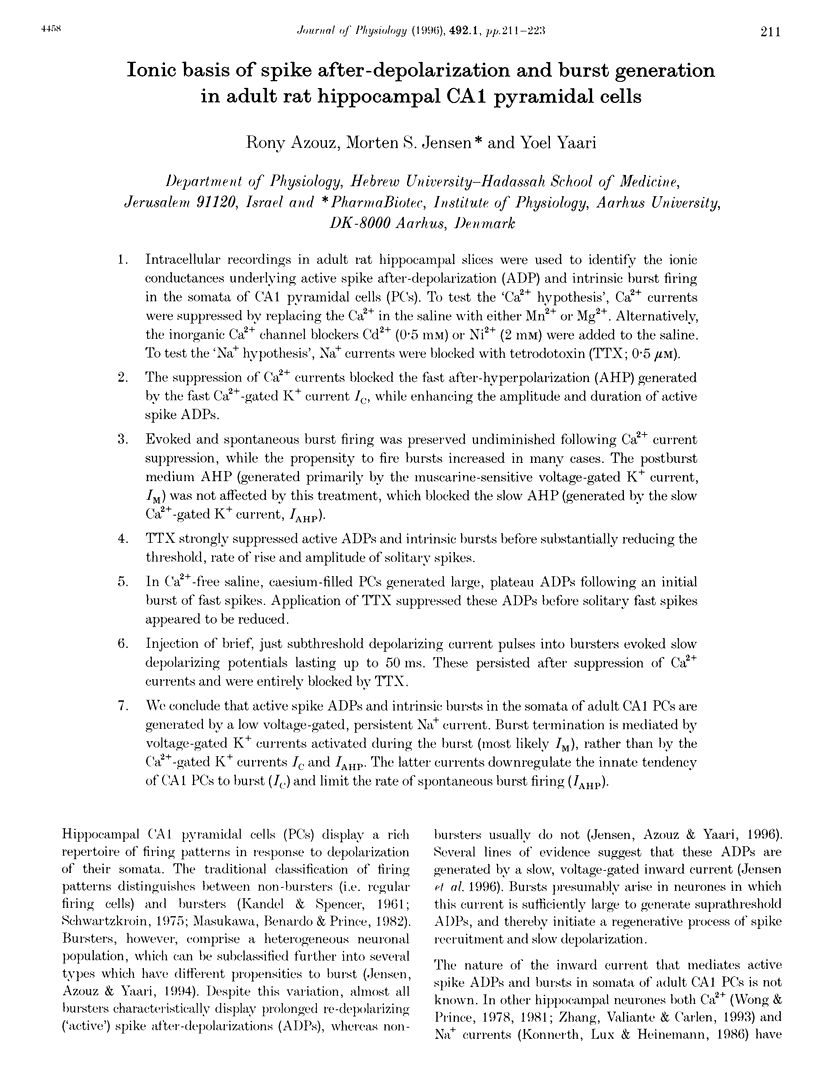
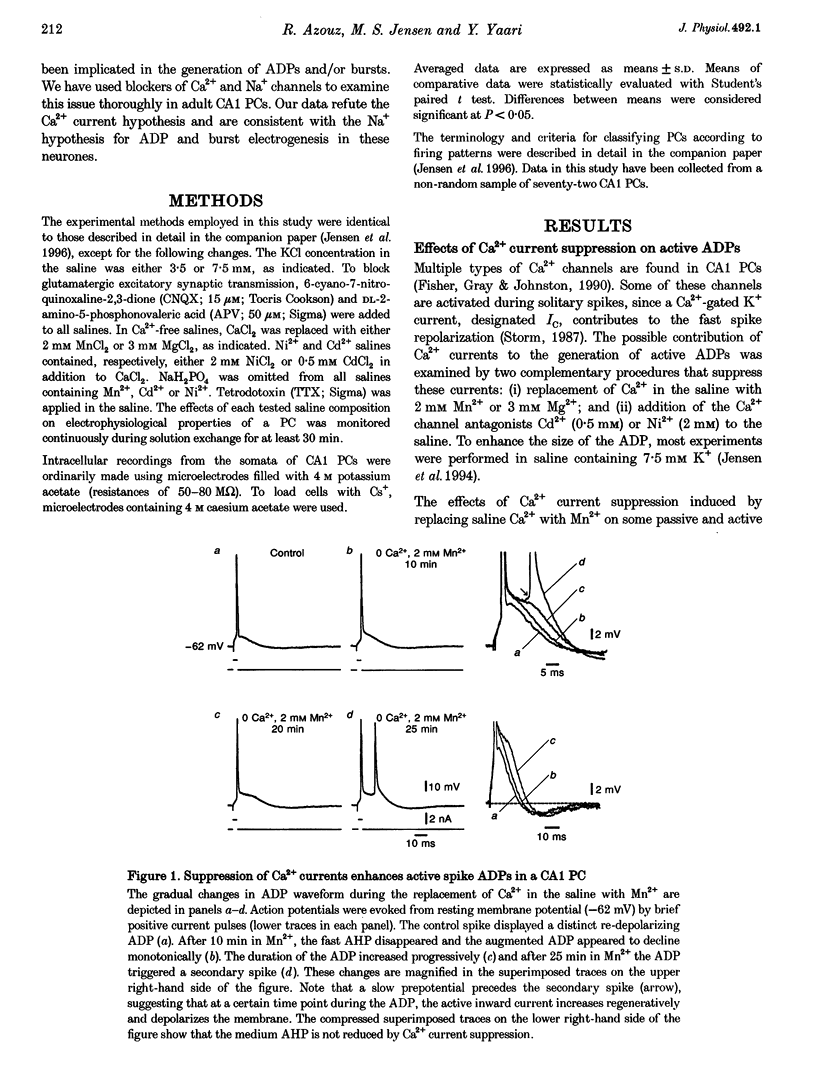
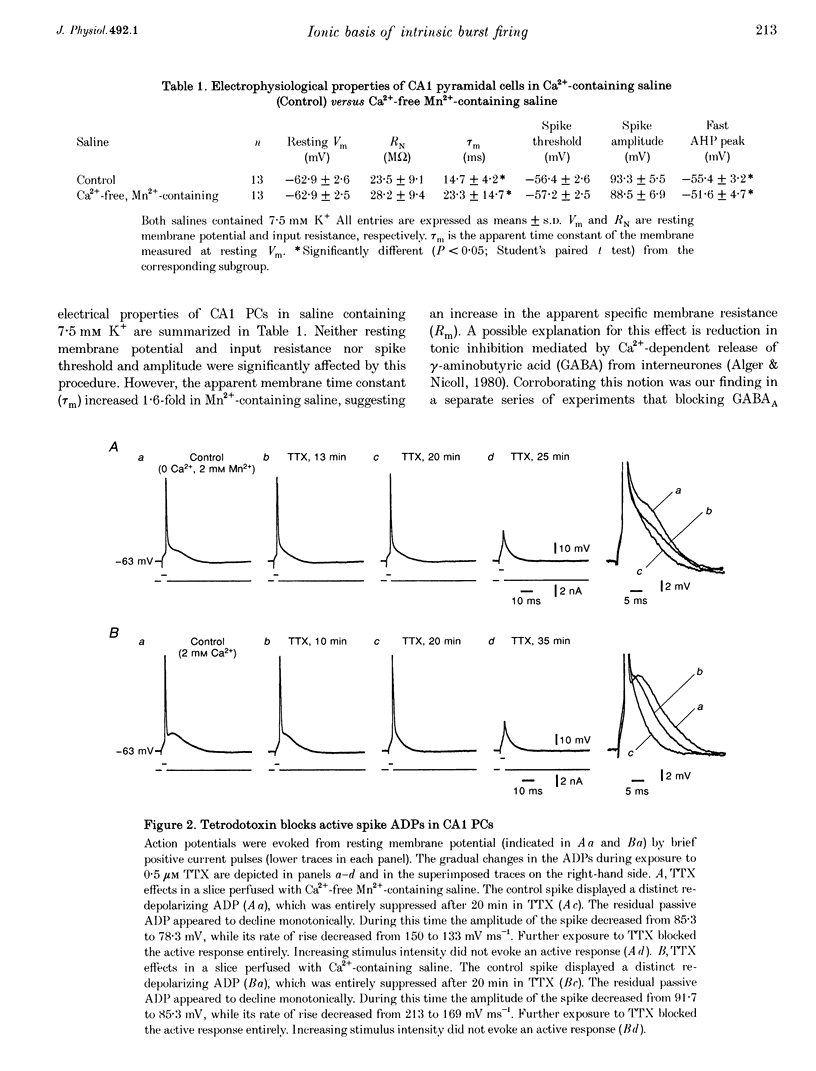
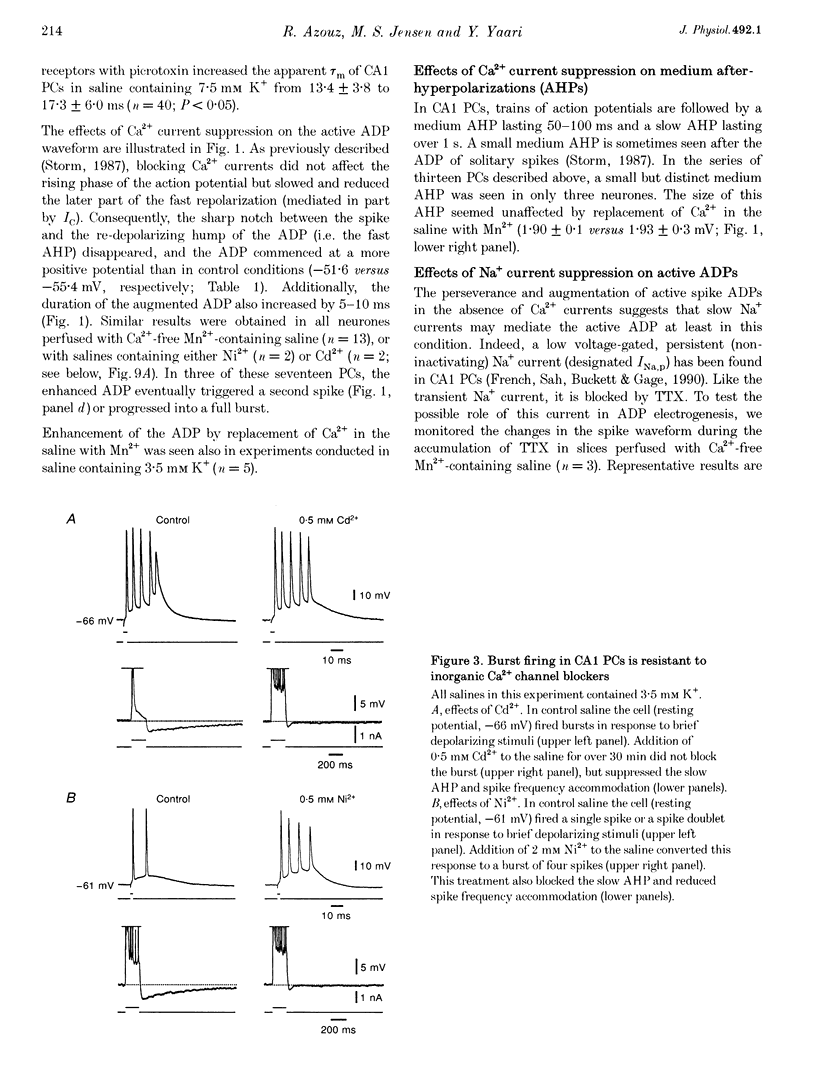
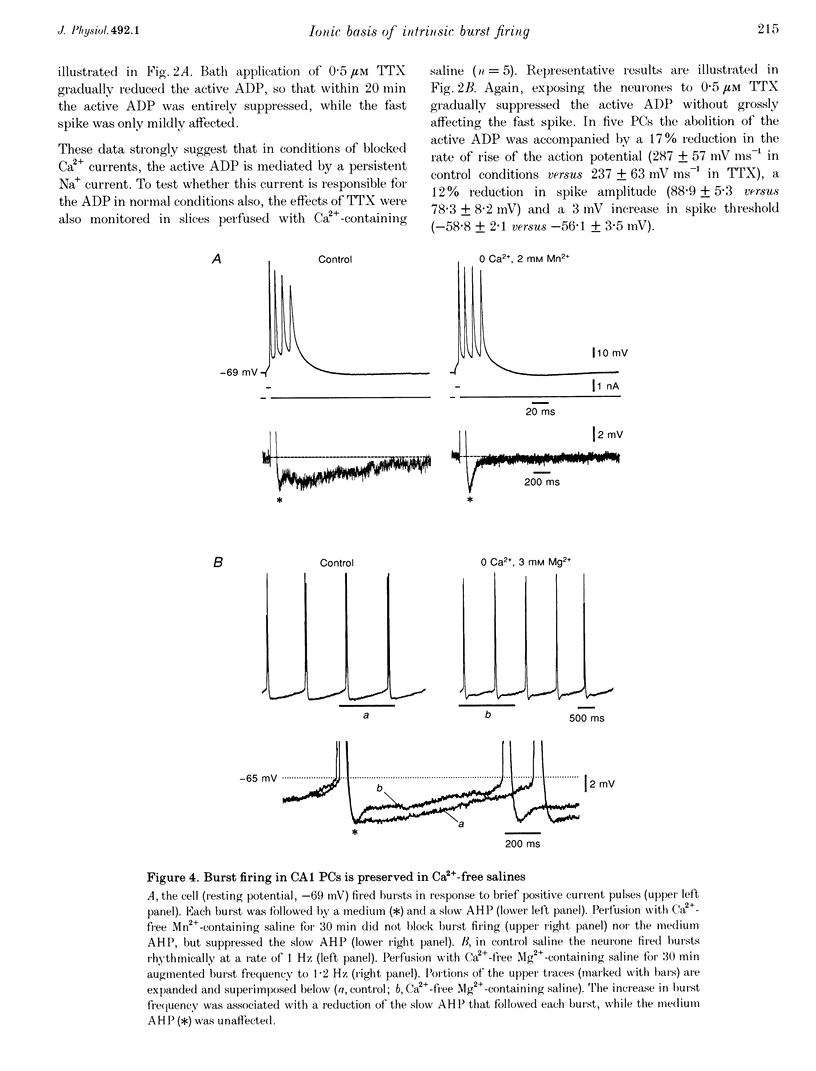
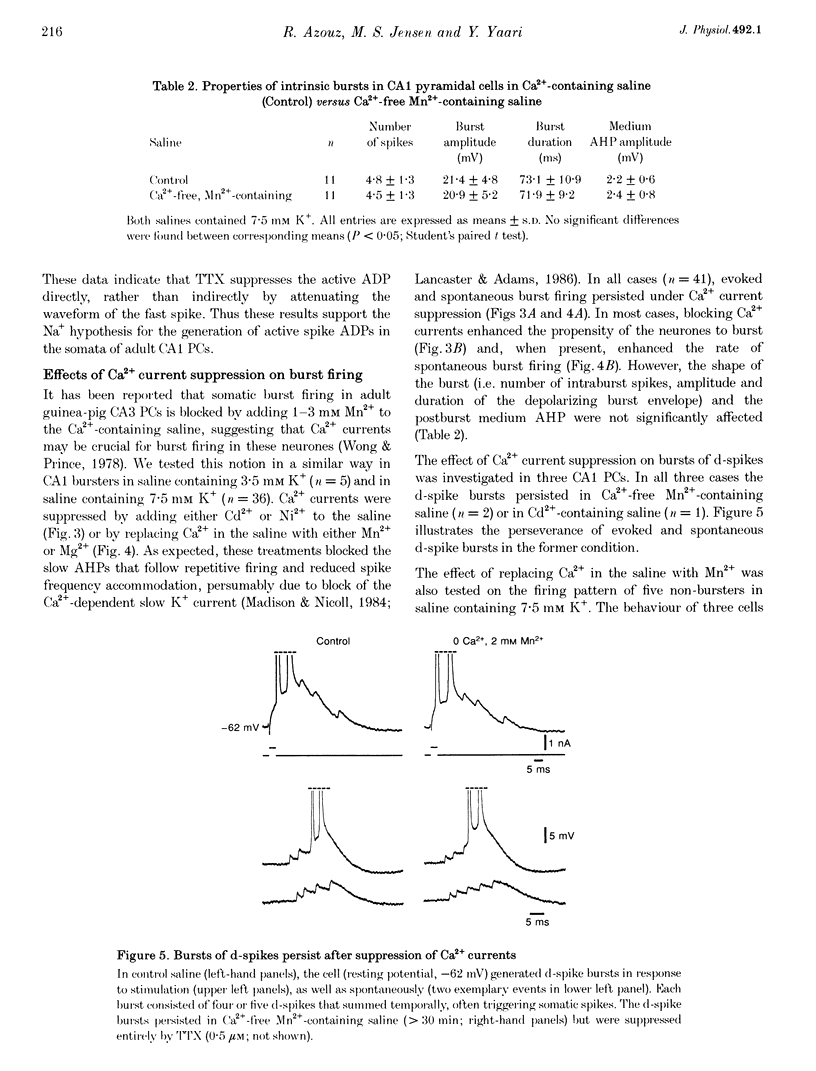
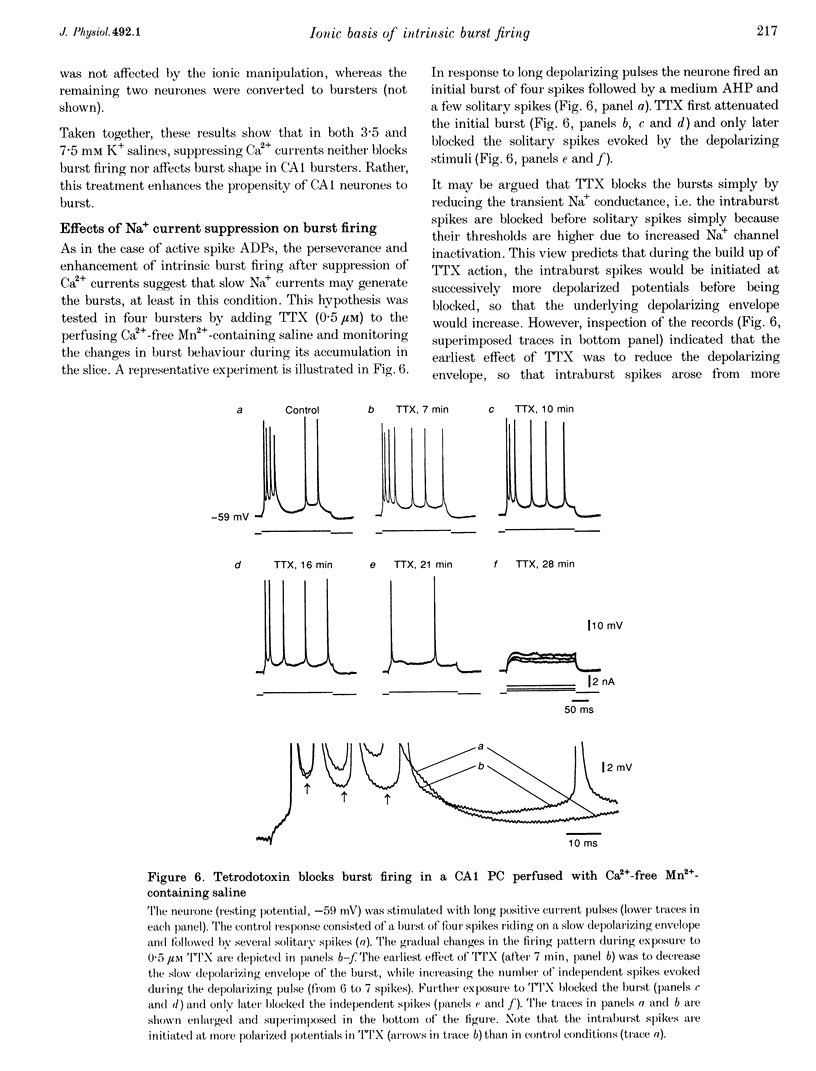
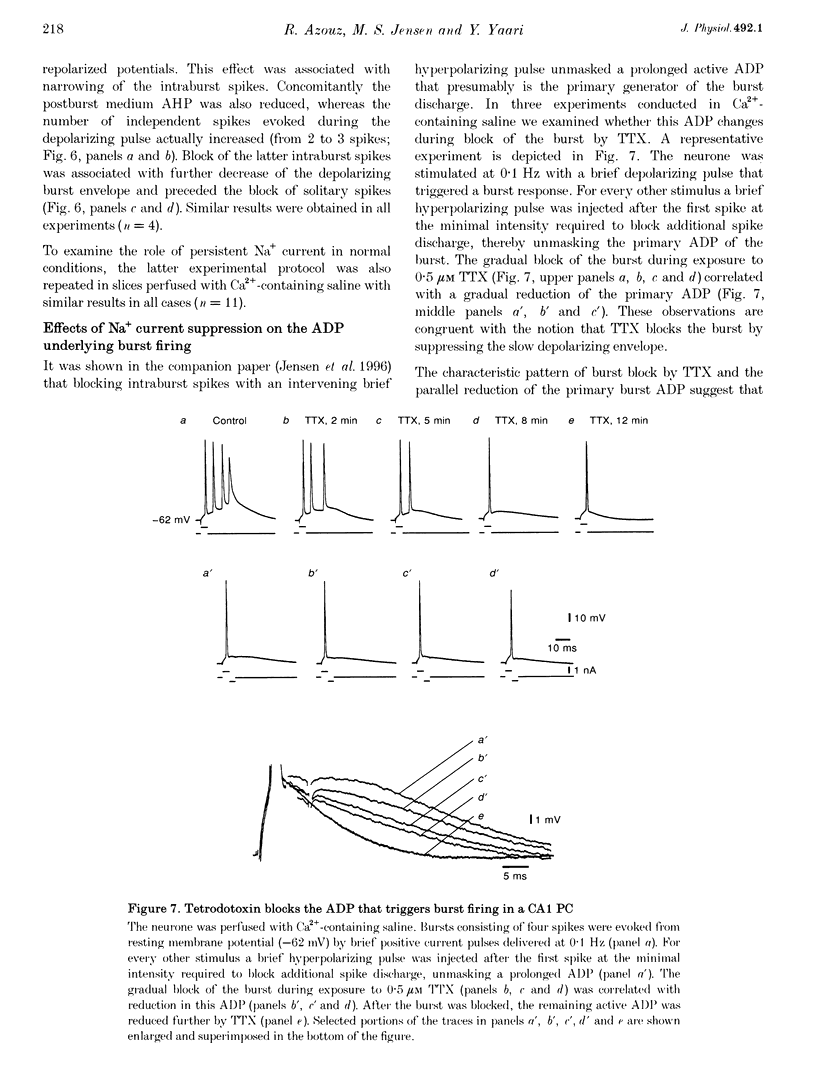

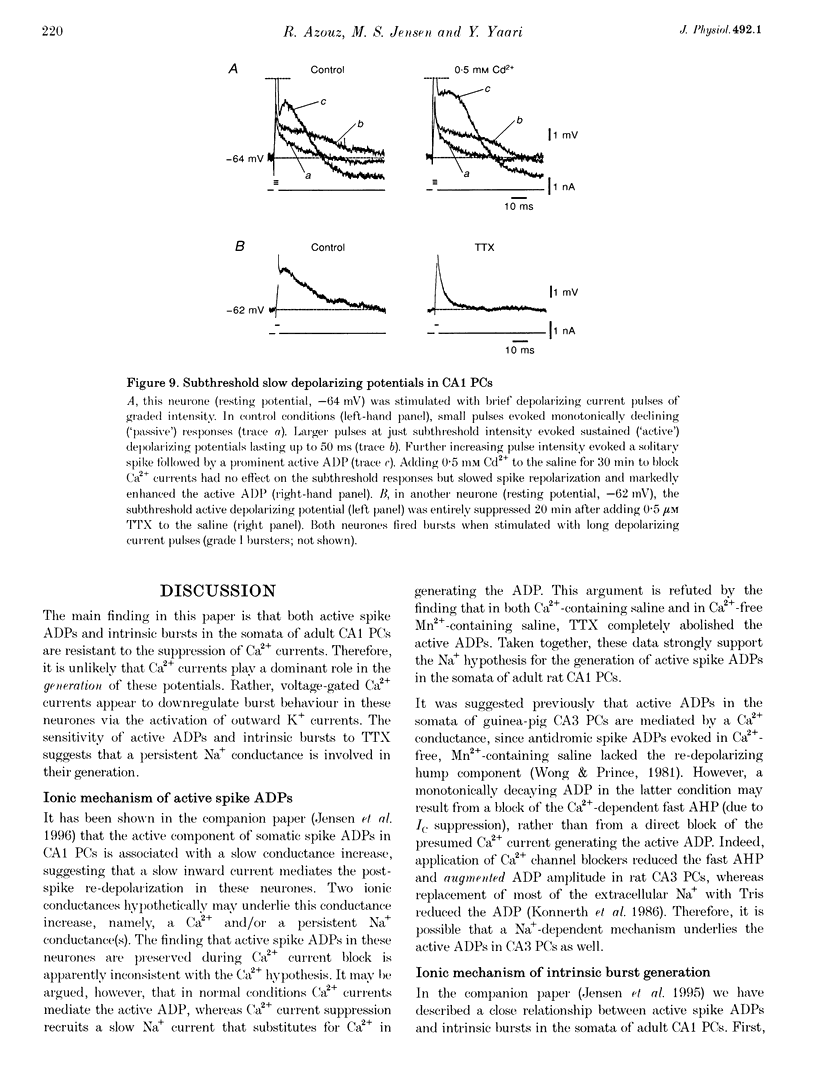
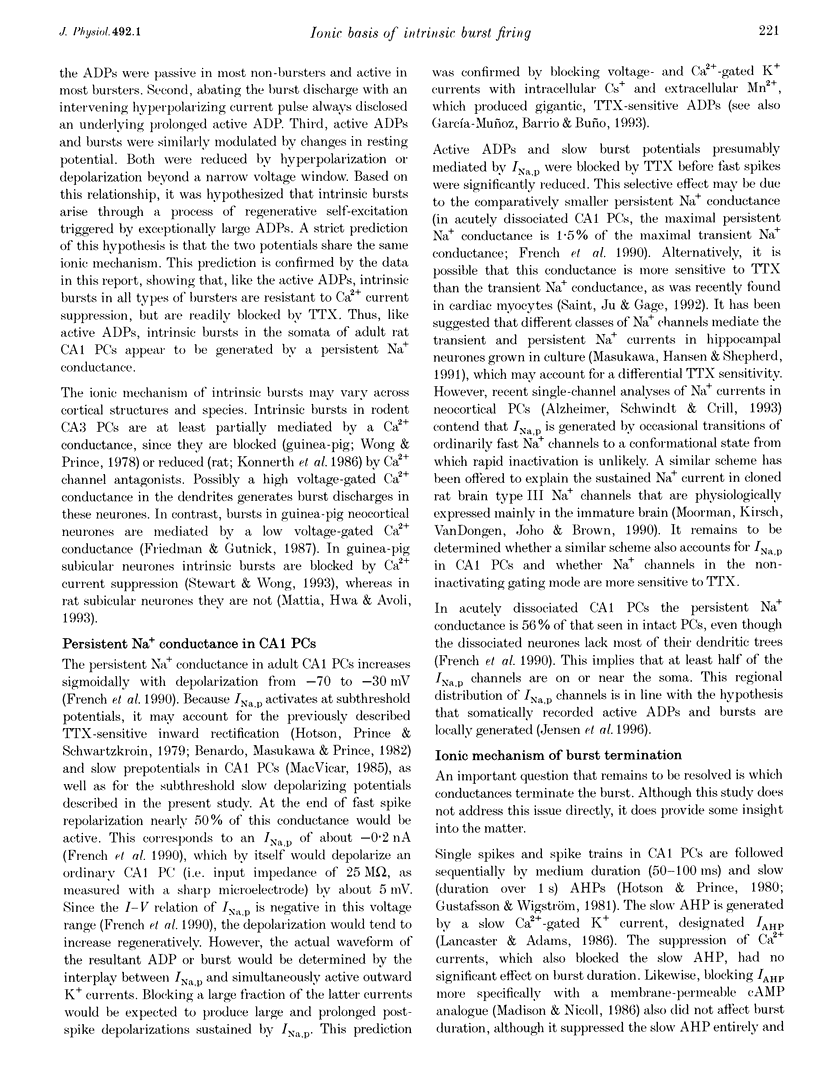

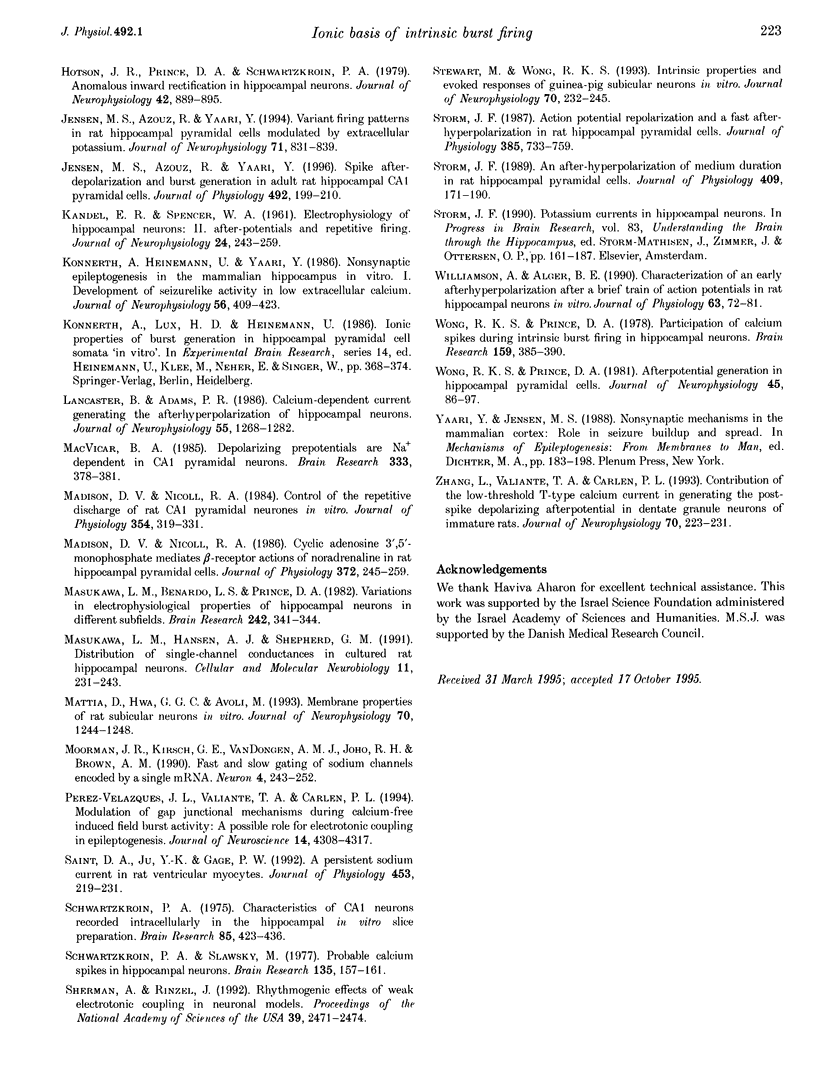
Selected References
These references are in PubMed. This may not be the complete list of references from this article.
- Jensen M. S., Azouz R., Yaari Y. Spike after-depolarization and burst generation in adult rat hippocampal CA1 pyramidal cells. J Physiol. 1996 Apr 1;492(Pt 1):199–210. doi: 10.1113/jphysiol.1996.sp021301. [DOI] [PMC free article] [PubMed] [Google Scholar]
- KANDEL E. R., SPENCER W. A. Electrophysiology of hippocampal neurons. II. After-potentials and repetitive firing. J Neurophysiol. 1961 May;24:243–259. doi: 10.1152/jn.1961.24.3.243. [DOI] [PubMed] [Google Scholar]
- Konnerth A., Heinemann U., Yaari Y. Nonsynaptic epileptogenesis in the mammalian hippocampus in vitro. I. Development of seizurelike activity in low extracellular calcium. J Neurophysiol. 1986 Aug;56(2):409–423. doi: 10.1152/jn.1986.56.2.409. [DOI] [PubMed] [Google Scholar]
- Lancaster B., Adams P. R. Calcium-dependent current generating the afterhyperpolarization of hippocampal neurons. J Neurophysiol. 1986 Jun;55(6):1268–1282. doi: 10.1152/jn.1986.55.6.1268. [DOI] [PubMed] [Google Scholar]
- Macvicar B. A. Depolarizing prepotentials are Na+ dependent in CA1 pyramidal neurons. Brain Res. 1985 May 6;333(2):378–381. doi: 10.1016/0006-8993(85)91597-5. [DOI] [PubMed] [Google Scholar]
- Madison D. V., Nicoll R. A. Cyclic adenosine 3',5'-monophosphate mediates beta-receptor actions of noradrenaline in rat hippocampal pyramidal cells. J Physiol. 1986 Mar;372:245–259. doi: 10.1113/jphysiol.1986.sp016007. [DOI] [PMC free article] [PubMed] [Google Scholar]
- Masukawa L. M., Benardo L. S., Prince D. A. Variations in electrophysiological properties of hippocampal neurons in different subfields. Brain Res. 1982 Jun 24;242(2):341–344. doi: 10.1016/0006-8993(82)90320-1. [DOI] [PubMed] [Google Scholar]
- Masukawa L. M., Hansen A. J., Shepherd G. Distribution of single-channel conductances in cultured rat hippocampal neurons. Cell Mol Neurobiol. 1991 Apr;11(2):231–243. doi: 10.1007/BF00769036. [DOI] [PubMed] [Google Scholar]
- Moorman J. R., Kirsch G. E., VanDongen A. M., Joho R. H., Brown A. M. Fast and slow gating of sodium channels encoded by a single mRNA. Neuron. 1990 Feb;4(2):243–252. doi: 10.1016/0896-6273(90)90099-2. [DOI] [PubMed] [Google Scholar]
- Perez-Velazquez J. L., Valiante T. A., Carlen P. L. Modulation of gap junctional mechanisms during calcium-free induced field burst activity: a possible role for electrotonic coupling in epileptogenesis. J Neurosci. 1994 Jul;14(7):4308–4317. doi: 10.1523/JNEUROSCI.14-07-04308.1994. [DOI] [PMC free article] [PubMed] [Google Scholar]
- Saint D. A., Ju Y. K., Gage P. W. A persistent sodium current in rat ventricular myocytes. J Physiol. 1992;453:219–231. doi: 10.1113/jphysiol.1992.sp019225. [DOI] [PMC free article] [PubMed] [Google Scholar]
- Schwartzkroin P. A. Characteristics of CA1 neurons recorded intracellularly in the hippocampal in vitro slice preparation. Brain Res. 1975 Mar 7;85(3):423–436. doi: 10.1016/0006-8993(75)90817-3. [DOI] [PubMed] [Google Scholar]
- Sherman A., Rinzel J. Rhythmogenic effects of weak electrotonic coupling in neuronal models. Proc Natl Acad Sci U S A. 1992 Mar 15;89(6):2471–2474. doi: 10.1073/pnas.89.6.2471. [DOI] [PMC free article] [PubMed] [Google Scholar]
- Storm J. F. Action potential repolarization and a fast after-hyperpolarization in rat hippocampal pyramidal cells. J Physiol. 1987 Apr;385:733–759. doi: 10.1113/jphysiol.1987.sp016517. [DOI] [PMC free article] [PubMed] [Google Scholar]
- Williamson A., Alger B. E. Characterization of an early afterhyperpolarization after a brief train of action potentials in rat hippocampal neurons in vitro. J Neurophysiol. 1990 Jan;63(1):72–81. doi: 10.1152/jn.1990.63.1.72. [DOI] [PubMed] [Google Scholar]
- Wong R. K., Prince D. A. Afterpotential generation in hippocampal pyramidal cells. J Neurophysiol. 1981 Jan;45(1):86–97. doi: 10.1152/jn.1981.45.1.86. [DOI] [PubMed] [Google Scholar]
- Wong R. K., Prince D. A. Participation of calcium spikes during intrinsic burst firing in hippocampal neurons. Brain Res. 1978 Dec 29;159(2):385–390. doi: 10.1016/0006-8993(78)90544-9. [DOI] [PubMed] [Google Scholar]


